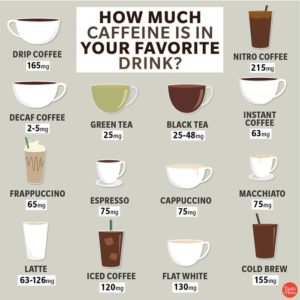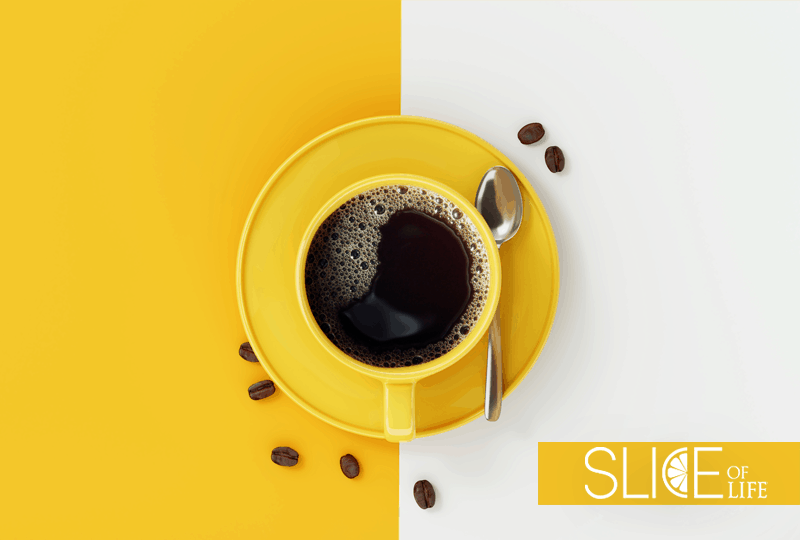One of the classic coming-of-age moments that college students go through is sitting down to work (typically this moment comes less than 24 hours before a deadline) and realizing they have loaded up on so much preparatory caffeine that their eyelids get twitchy. Do not get me wrong, I am at this moment writing with a cup of coffee next to me, but it can become very easy for either students or working professionals to depend more and more on stimulants to get through the day; often the act of buying a coffee or energy drink can feel more like a placebo step as we try to motivate ourselves to get going.
Today we are going to take a quick look at what is considered a safe limit for caffeine intake just for a little perspective. Again, this is not to scare anyone away from coffee, but a little extra perspective can go a long way just like when trying to count calories.
According to both work by the FDA and the Mayo Clinic, a good number to keep in mind is 400. An average adult (and keep in mind that in health “average” has to capture a ton of sizes and body types) can consume about 400 milligrams of caffeine a day. Now, the thing is that like with calories, we can sometimes be led astray if we only rely on our intuition to guess a drink’s contents. If you are a frequent Starbucks customer or use another large-scale chain, then you can also easily find the caffeine contents of their drinks. Here are a few benchmarks to keep in your back pocket, although individual circumstances may differ depending on the product you are using:

- An 8oz coffee = 100 mg of caffeine
- An 8oz green tea = 30 mg
- An 8oz cola = 20 mg
- An 8oz Red Bull = 80 mg
- Energy “shots” can vary widely but can be as high as 200 mg
You can find more of these estimates on the Mayo Clinic website, and many other sources offer similar resources. So, as you can see, drinking about four cups of coffee a day would take someone right up to the limit of what is considered safe caffeine consumption. Always be sure to do at least some of basic arithmetic for serving sizes – the fact that a “large” at Starbucks is 20 oz means just one of those is already putting a lot of juice into your system. Also, most energy drinks and shots contain more stimulants than just caffeine, so judging how they might affect your long-term health should demand some attention if you use them regularly. As always, taking your personal circumstances into account is far more important than going by broad rules of thumb.
Also, just because 400 milligrams is a safe threshold for most people, that doesn’t mean that you still shouldn’t consider whether slowing down your coffee or soda habit wouldn’t have other benefits like a better sleep schedule, reducing headaches, saving some money and losing the feeling that you are depending on a drink to be your best.
- Try not to think of caffeine as a sleep supplement – look for the root causes of that sleepiness. Keeping a regular sleep schedule and getting enough sleep will always have you feeling better than a caffeine rush.
- Don’t go all at once – particularly if you are a heavy caffeine drinker, try trimming out a drink or two a day and maintaining that before consuming more.
- If part of your habit involves drinking caffeinated drinks as a “treat” (think sodas, sweet energy drinks or the more dessert-like coffee drinks), then find a substitute reward for yourself.
- Very similar to tip above, consider decaffeinated options of drinks that you just don’t want to do without.
- We all tend to reach for an energy boost when we feel particularly stressed or overwhelmed; that might be a totally healthy coping mechanism, but be aware that those consumption periods don’t become permanent.
If you enjoy learning about how different chemicals like caffeine effect the body – you should check out these degree programs at LIFE:
Associate of Science in Health and Wellness
Bachelor of Science in Biology
Bachelor of Science in BioPsychology
Pre Doctor of Chiropractic
Slice of LIFE is an invitation to and extension of everything happening at Life University. Whether you are a current student, a potential freshman or a proud alum, Slice of LIFE can help keep you connected to your academic community. Know of a compelling Life U story to be shared, such as a riveting project, innovative group or something similar? Let us know by emailing Marketing@life.edu.


Social Media